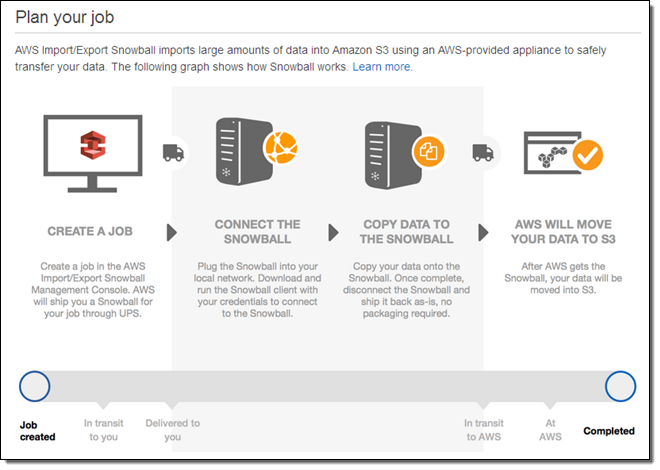As reported by The Verge: Backing data up to the cloud is pretty fast for most of us since we're syncing small files, but it can be a hugely time-consuming process if you're backing up something bigger, say, an entire data center. So Amazon has come up with a solution: essentially a big ugly box that holds 50TB of storage and can be mailed back and forth with ease so that the transfers can all be done locally, at much higher speeds.

50 POUNDS OF MACHINE, 50TB OF STORAGE
The idea of sending hard drives back and forth isn't new; it's something that a lot of cloud storage services already offer, including Amazon. But what's different here is that Amazon is building hardware just for this purpose, and the hardware is pretty intense.
Amazon is calling its storage device "Snowball," which is kind of like when you name a giant dog Fluffy. The Snowball has thick gray housing that's meant to make the entire device rugged and shippable. It's weatherproof, and it's supposed to be able to withstand a 6g force without taking damage. Amazon says that you won't even have to pack this thing up; you can apparently just hand it over to a shipping service.

The Snowball weighs 50 pounds and is meant to be light enough for a single person to carry — there are even handles on top. The device also has an E Ink display for controlling it. And, of course, there's a 10Gbps network connection for transferring data.
Rather than selling the devices, Amazon is renting them out as needed. Companies can request one for $200 per transfer (plus shipping costs), which Amazon says could be a pretty solid deal; it claims that it can be as low as one-fifth the cost of backing up over the internet. All data is encrypted during transfer, and Amazon says it will thoroughly wipe the device before sending it out again. Transfers are expected to take only a single day, with the only slowdown being for shipping.







